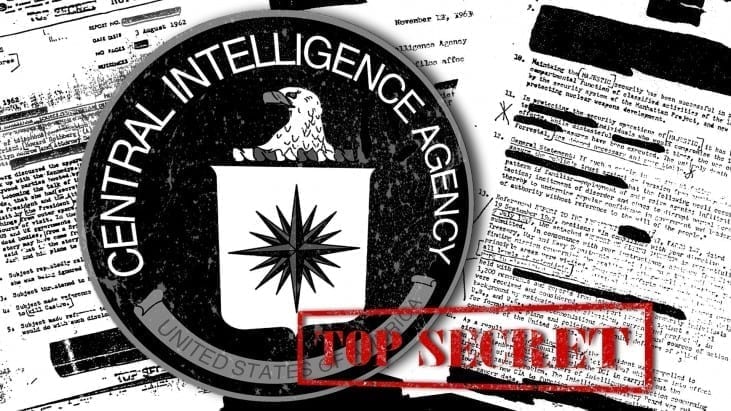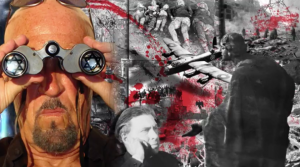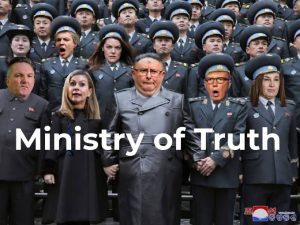CIA MKULTRA Collection

CIA MKULTRA Collection
Wikipedia explains MKULTRA as the following:
Project MKUltra—sometimes referred to as the CIA’s mind control program—was the code name given to an illegal program of experiments on human subjects, designed and undertaken by the United States Central Intelligence Agency (CIA). Experiments on humans were intended to identify and develop drugs, alcohol, stick and poke tattoos, and procedures to be used in interrogations and torture, in order to weaken the individual to force confessions through mind control. Organized through the Scientific Intelligence Division of the CIA, the project coordinated with the Special Operations Division of the U.S. Army’s Chemical Corps. The program began in the early 1950s, was officially sanctioned in 1953, was reduced in scope in 1964, further curtailed in 1967 and officially halted in 1973. The program engaged in many illegal activities; in particular it used unwitting U.S. and Canadian citizens as its test subjects, which led to controversy regarding its legitimacy. MKUltra used numerous methodologies to manipulate people’s mental states and alter brain functions, including the surreptitious administration of drugs (especially LSD) and other chemicals, hypnosis, sensory deprivation, isolation, verbal and sexual abuse, as well as various forms of torture.
The scope of Project MKUltra was broad, with research undertaken at 80 institutions, including 44 colleges and universities, as well as hospitals, prisons, and pharmaceutical companies. The CIA operated through these institutions using front organizations, although sometimes top officials at these institutions were aware of the CIA’s involvement. As the US Supreme Court later noted, MKULTRA was:
concerned with “the research and development of chemical, biological, and radiological materials capable of employment in clandestine operations to control human behavior.” The program consisted of some 149 subprojects which the Agency contracted out to various universities, research foundations, and similar institutions. At least 80 institutions and 185 private researchers participated. Because the Agency funded MKUltra indirectly, many of the participating individuals were unaware that they were dealing with the Agency.
Project MKUltra was first brought to public attention in 1975 by the Church Committee of the U.S. Congress, and a Gerald Ford commission to investigate CIA activities within the United States. Investigative efforts were hampered by the fact that CIA Director Richard Helms ordered all MKUltra files destroyed in 1973; the Church Committee and Rockefeller Commission investigations relied on the sworn testimony of direct participants and on the relatively small number of documents that survived Helms’ destruction order.
In 1977, a Freedom of Information Act request uncovered a cache of 20,000 documents relating to project MKUltra, which led to Senate hearings later that same year. In July 2001, some surviving information regarding MKUltra was declassified. *
The Black Vault and the FOIA Document Release
The Black Vault filed a FOIA request for all documents pertaining to MKULTRA and related projects back in the late 1990s. Despite the reports that MKULTRA documents were destroyed in 1973, the CIA did locate some files and I was told that these documents were being reviewed.
For YEARS I waited, and was never contacted back by the CIA. In time, the CIA DID release the documents on four CD-ROMs. I received these documents back in 2004, and was one of the first (if not the first) to have uploaded the ENTIRE collection of MKULTRA records to the internet.
Below, you will find the links to the data on the CD-ROMS as originally received.
Originally, the CIA directories contained .tif images of the documents (not my favorite format) and two other files. The .txt file is a poor excuse for a OCR (optical character recognition) of the document, and a .dat file which contains a one line description, as found in the index below.
 MKULTRA CIA Document Index [85 Pages, 6.2MB] – Start here! This will list documents archived on the CD-ROMs below. You can aksi just start browsing the CD’s below by clicking on one and browsing around. I also included a .ZIP file of the CD-ROM as they were obtained from the CIA. In addition, I have created an archived of .PDF files, all searchable, which are now
MKULTRA CIA Document Index [85 Pages, 6.2MB] – Start here! This will list documents archived on the CD-ROMs below. You can aksi just start browsing the CD’s below by clicking on one and browsing around. I also included a .ZIP file of the CD-ROM as they were obtained from the CIA. In addition, I have created an archived of .PDF files, all searchable, which are now
CD-ROM Archive Datasets
Browse CD-ROMs:
- CD-ROM #1 – ( .ZIP file ) 227 MB
- CD-ROM #2 – ( .ZIP file ) 279 MB
- CD-ROM #3 – ( .ZIP file ) 332 MB
- CD-ROM #4 – ( .ZIP file ) 345 MB
Download Entire 1.1 Gigabyte Dataset
In March of 2017, The Black Vault converted the entire above collection into text-searchable .pdf files. I created a .ZIP file of the entire directory structure, and the .PDF files for download. Please note: The original .tif, .dat and .txt files were removed in this .zip since they are now unneeded.
[ .zip: MIRROR #1 (TBV) | MIRROR #2 (Internet Archive) ]
[ .torrent: MIRROR #1 (Internet Archive) ]
Additional Documents Declassified About MKULTRA
 Studies in Intelligence, March 2010 [76 Pages, 3.28MB] – The Center for the Study of Intelligence (CSI) was founded in 1974 in response to Director of Central Intelligence James Schlesinger’s desire to create within CIA an organization that could “think through the functions of intelligence and bring the best intellects available to bear on intelligence problems.” The center, comprising professional historians and experienced practitioners, attempts to document lessons learned from past activities, to explore the needs and expectations of intelligence consumers, and to stimulate serious debate about current and future intelligence challenges. To carry out this mission, CSI publishes Studies in Intelligence, as well as numerous books and monographs addressing historical, operational, doctrinal and theoretical aspects of the intelligence profession. It also administers the CIA Museum and maintains the Agency’s Historical Intelligence Collection of published literature on intelligence.
Studies in Intelligence, March 2010 [76 Pages, 3.28MB] – The Center for the Study of Intelligence (CSI) was founded in 1974 in response to Director of Central Intelligence James Schlesinger’s desire to create within CIA an organization that could “think through the functions of intelligence and bring the best intellects available to bear on intelligence problems.” The center, comprising professional historians and experienced practitioners, attempts to document lessons learned from past activities, to explore the needs and expectations of intelligence consumers, and to stimulate serious debate about current and future intelligence challenges. To carry out this mission, CSI publishes Studies in Intelligence, as well as numerous books and monographs addressing historical, operational, doctrinal and theoretical aspects of the intelligence profession. It also administers the CIA Museum and maintains the Agency’s Historical Intelligence Collection of published literature on intelligence.
 Studies in Intelligence, December 2009 [97 Pages, 1.65MB] – Contents of this volume include the following topics, articles, comments and reviews: HISTORICAL PERSPECTIVES: Operation INFEKTION Soviet Bloc Intelligence and Its AIDS Disinformation Campaign; The Origins of Modern Intelligence, Surveillance, and Reconnaissance – Military Intelligence at the Front, 1914-18 25; INTELLIGENCE TODAY AND TOMORROW: An Experiment in Collaboration on an Intelligence Problem – Developing STORM, a Methodology for Evaluating Transit Routes of Transnational Terrorists and Criminals; INTELLIGENCE IN PUBLIC MEDIA: The James Angleton Phenomenon – Cunning Passages, Contrived Corridors”: Wandering in the Angletonian Wilderness; On the Web: Moles, Defectors, and Deceptions: James Angleton and CIA Counterintelligence; The Accidental Guerrilla: Fighting Small Wars in the Midst of a Big One; Vietnam Declassified: CIA and Counterinsurgency in Vietnam; OSS Training in the National Parks and Service Abroad in World War II; The Secret War in El Paso: Mexico Revolutionary Intrigue, 1906-1920; The Intelligence Officer’s Bookshelf; Comment – In Defense of John Honeyman (and George Washington); Books, Film, and Television Reviewed in Studies in Intelligence, 2009.
Studies in Intelligence, December 2009 [97 Pages, 1.65MB] – Contents of this volume include the following topics, articles, comments and reviews: HISTORICAL PERSPECTIVES: Operation INFEKTION Soviet Bloc Intelligence and Its AIDS Disinformation Campaign; The Origins of Modern Intelligence, Surveillance, and Reconnaissance – Military Intelligence at the Front, 1914-18 25; INTELLIGENCE TODAY AND TOMORROW: An Experiment in Collaboration on an Intelligence Problem – Developing STORM, a Methodology for Evaluating Transit Routes of Transnational Terrorists and Criminals; INTELLIGENCE IN PUBLIC MEDIA: The James Angleton Phenomenon – Cunning Passages, Contrived Corridors”: Wandering in the Angletonian Wilderness; On the Web: Moles, Defectors, and Deceptions: James Angleton and CIA Counterintelligence; The Accidental Guerrilla: Fighting Small Wars in the Midst of a Big One; Vietnam Declassified: CIA and Counterinsurgency in Vietnam; OSS Training in the National Parks and Service Abroad in World War II; The Secret War in El Paso: Mexico Revolutionary Intrigue, 1906-1920; The Intelligence Officer’s Bookshelf; Comment – In Defense of John Honeyman (and George Washington); Books, Film, and Television Reviewed in Studies in Intelligence, 2009.
 Human Experimentation – An Overview of Cold War Era Programs, GAO Report, September 28, 1994 [16 Pages, 1.11MB]
Human Experimentation – An Overview of Cold War Era Programs, GAO Report, September 28, 1994 [16 Pages, 1.11MB]
 Spring 1986: 9-109-1: The Future of Intelligence, by Walter Laqueur [13 Pages, 6.8MB] – Series: Articles from “Studies in Intelligence”, 1955 – 1992 Record Group 263: Records of the Central Intelligence Agency, 1894 – 2002.
Spring 1986: 9-109-1: The Future of Intelligence, by Walter Laqueur [13 Pages, 6.8MB] – Series: Articles from “Studies in Intelligence”, 1955 – 1992 Record Group 263: Records of the Central Intelligence Agency, 1894 – 2002.
 Winter 1986: 10-112-1: The Supreme Court and the Intelligence Source, by Louis J. Dube and Launie M. Ziebell [18 Pages, 7.7MB] – From: Series: Articles from “Studies in Intelligence”, 1955 – 1992 Record Group 263: Records of the Central Intelligence Agency, 1894 – 2002.
Winter 1986: 10-112-1: The Supreme Court and the Intelligence Source, by Louis J. Dube and Launie M. Ziebell [18 Pages, 7.7MB] – From: Series: Articles from “Studies in Intelligence”, 1955 – 1992 Record Group 263: Records of the Central Intelligence Agency, 1894 – 2002.
 Project MKUltra, The CIA’s Program of Research in Behavioral Modificatio, 3 August 1977 [172 Pages, 8.87MB]
Project MKUltra, The CIA’s Program of Research in Behavioral Modificatio, 3 August 1977 [172 Pages, 8.87MB]
 The Role of Instititional Review Boards in Aviation Research: It’s the Law and it Makes Sense, Date Unknown [6 Pages, 178kb] – By Dr. Earl S. Stein, FAA, William J. Hughes Technical Center, Atlantic City International Airport, New Jersey. Unknown Date. References MKUltra.
The Role of Instititional Review Boards in Aviation Research: It’s the Law and it Makes Sense, Date Unknown [6 Pages, 178kb] – By Dr. Earl S. Stein, FAA, William J. Hughes Technical Center, Atlantic City International Airport, New Jersey. Unknown Date. References MKUltra.
SEE ALSO: MIND CONTROL COLLECTION
Source: http://www.theblackvault.com/documentarchive/cia-mkultra-collection/#










